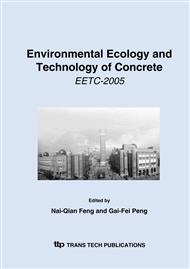p.669
p.676
p.684
p.693
p.700
p.706
p.713
p.720
p.725
Experimental Study and Finite Element Analysis on RPC Footwalk Braces
Abstract:
In this paper, a series of Reactive powder concrete (RPC) footwalk braces without conventional steel bars are designed for the Qing-Zang railway. Experimental studies on the braces are conducted in order to test the mechanical character of the braces. Totally eight RPC footwalk braces are experimentally measured with static load. According to the analysis of the experimental results, the ratio of the crack load got from the experiment to the design load is 2.54 and the deflection ductile coefficient is 2.32. The experimental results show that the mechanical performance of RPC footwalk braces can satisfy the engineering requirements and there is enough safety margin for footwalk braces. A three-dimensional finite element analysis (FEA) is also carried out and the results of FEA are compared with that of the experiments. The results show that the FEA method can be used in designing the RPC footwalk braces.
Info:
Periodical:
Pages:
713-719
Citation:
Online since:
January 2006
Authors:
Price:
Сopyright:
© 2006 Trans Tech Publications Ltd. All Rights Reserved
Share:
Citation:


